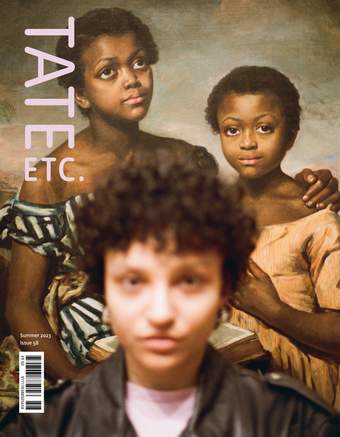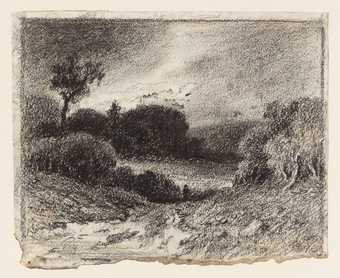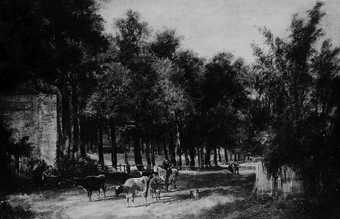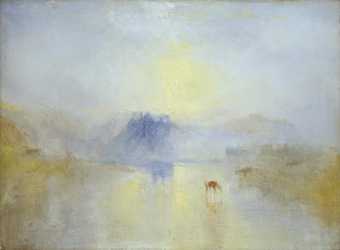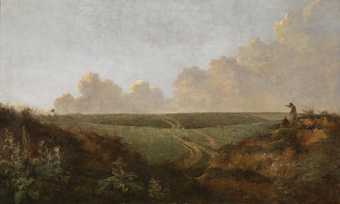
John Chrome
Mousehold Heath, Norwich (c.1818-20)
Tate
I first laid eyes on John Crome’s Mousehold Heath, Norwich c.1818–20 just a few months back. I hadn’t planned to see the painting that day; in fact, I had just turned down an invitation to write about it due to a mass of impending deadlines. And yet somehow, serendipitously, it had found its way to me, or I to it. I came across it hanging in a corner of Tate Britain; it’s a large, yet unassuming painting, which depicts a vast tract of land under an expanse of cloud-filled, grey-blue sky. The landscape is mostly featureless but for a pair of rustic figures gesturing across the fields and a few cows grazing in the distance; it’s a peaceful scene, pleasing to the eye, but not exactly sublime.
Had I stumbled across this work just a week or so before, it would probably have seemed just another painting of a field, another romantic vision of the rural past, of ‘merrie England’: idyllic, immutable and often, to people like me, off limits. Today Mousehold Heath is a wood-land nature reserve, used mainly by dog-walkers and teenagers who whizz around on BMX bikes. But for centuries, this area was ‘common land’, used by local people to graze livestock, extract useful materials like sand and gravel, and to forage for food and firewood, often to supplement their meagre wages. Attacks on the ‘commoners’ rights to use these natural resources, however, made this stretch of heathland a site of conflict and collision between the working people and the ruling classes through the centuries.
Mousehold Heath was a vital location during the Peasants’ Revolt of 1381, when rebels from the north and east of the county assembled there before storming the city of Norwich, destroying property and killing several prominent citizens in an act of resistance against rising poll taxes. In 1549, it became the camping ground for Kett’s Rebellion, when 16,000 peasants and farmers, led by a local yeoman named Robert Kett, protested the enclosure and fencing off of common lands, offering a list of demands to the ruling classes. During Crome’s lifetime, the heath was a site of ideological conflict, between those who felt the land’s agricultural potential was being wasted and those who valued the local community’s attachment to, and reliance on, the landscape. Ultimately, commercial interests proved more powerful, with Enclosure Acts for Mousehold Heath being passed in 1799, 1800 and 1801, shrinking down ‘the commons’ and excluding the most needy from its resources.
It’s hard to know whether Crome intended this to be a political painting. It’s a pleasant scene, but I believe that other forces drew me to the painting that day: the ghosts of Mousehold Heath, rendered invisible by Crome, but to me, faintly perceptible, lining up on the horizon amid the pearly clouds. People, often denied a voice, who risked their lives to fight for their rights and their freedom. People who struggled and organised and came together to make this green and pleasant land a better, fairer place. It was their stories that drew me to Mousehold Heath: stories which disrupt pastoral fantasies and exclusionary visions of the past, and encourage us to fight for our own causes in the present day.
When I came face to face with the painting, I knew, despite my deadlines, that these stories needed to be told. So that the voices of these invisible people may always be heard, across the land, and forever, on Mousehold Heath. Perhaps Crome, although he did not include them, visibly, in his painting, heard them too.
Mousehold Heath, Norwich was purchased in 1863.
Zakia Sewell is a broadcaster, writer and DJ from London with a passion for music, arts, mental health and history.
To read more of our special feature celebrating Tate Britain's rehang, visit www.tate.org.uk/tate-etc/issue-58-summer-2023/alex-farquharson-tate-britain-the-state-were-in

